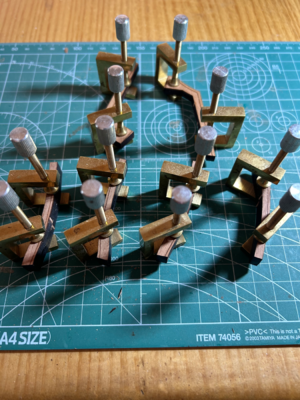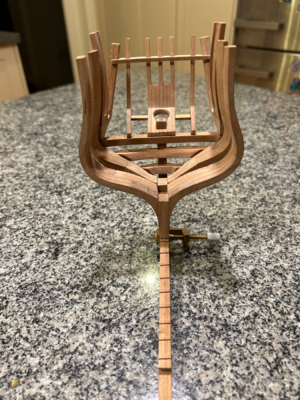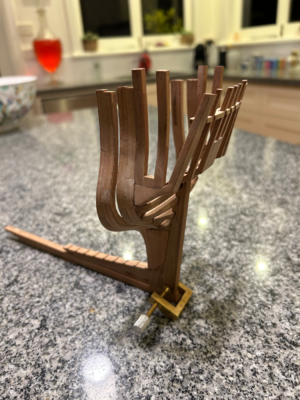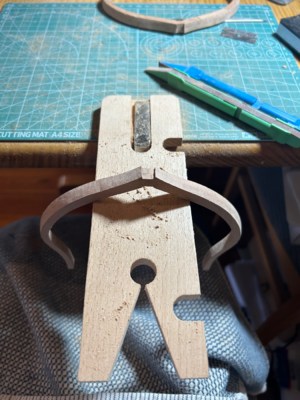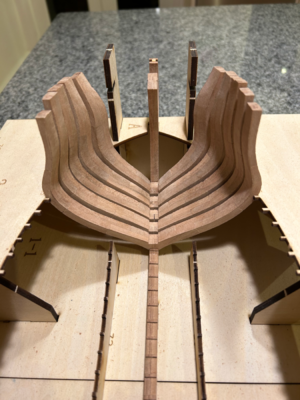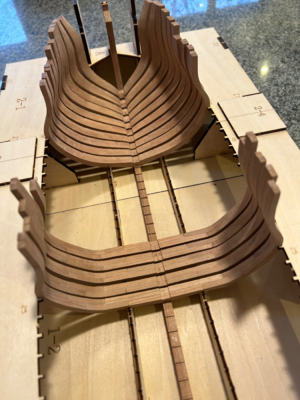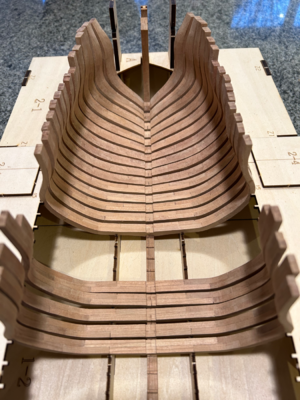- Joined
- Mar 1, 2023
- Messages
- 125
- Points
- 213

Paul, Jack and Grant, thanks for your encouragement. You were probably just as surprised as my family to see something other than a bag full of U-shaped wooden objects - AKA frames - on the end of the kitchen table.
I have started the rest of the stern structure. First of all the counter timbers. Same procedure as before - cut pieces from billet and glue up.
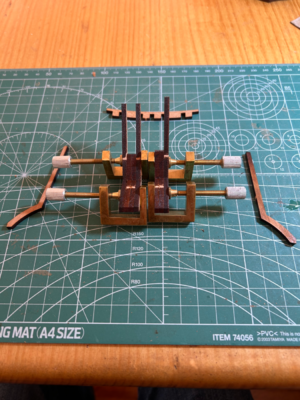
I have started the rest of the stern structure. First of all the counter timbers. Same procedure as before - cut pieces from billet and glue up.





